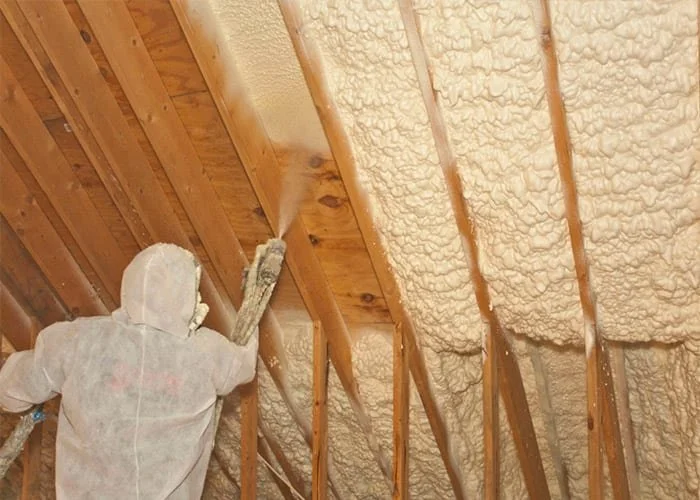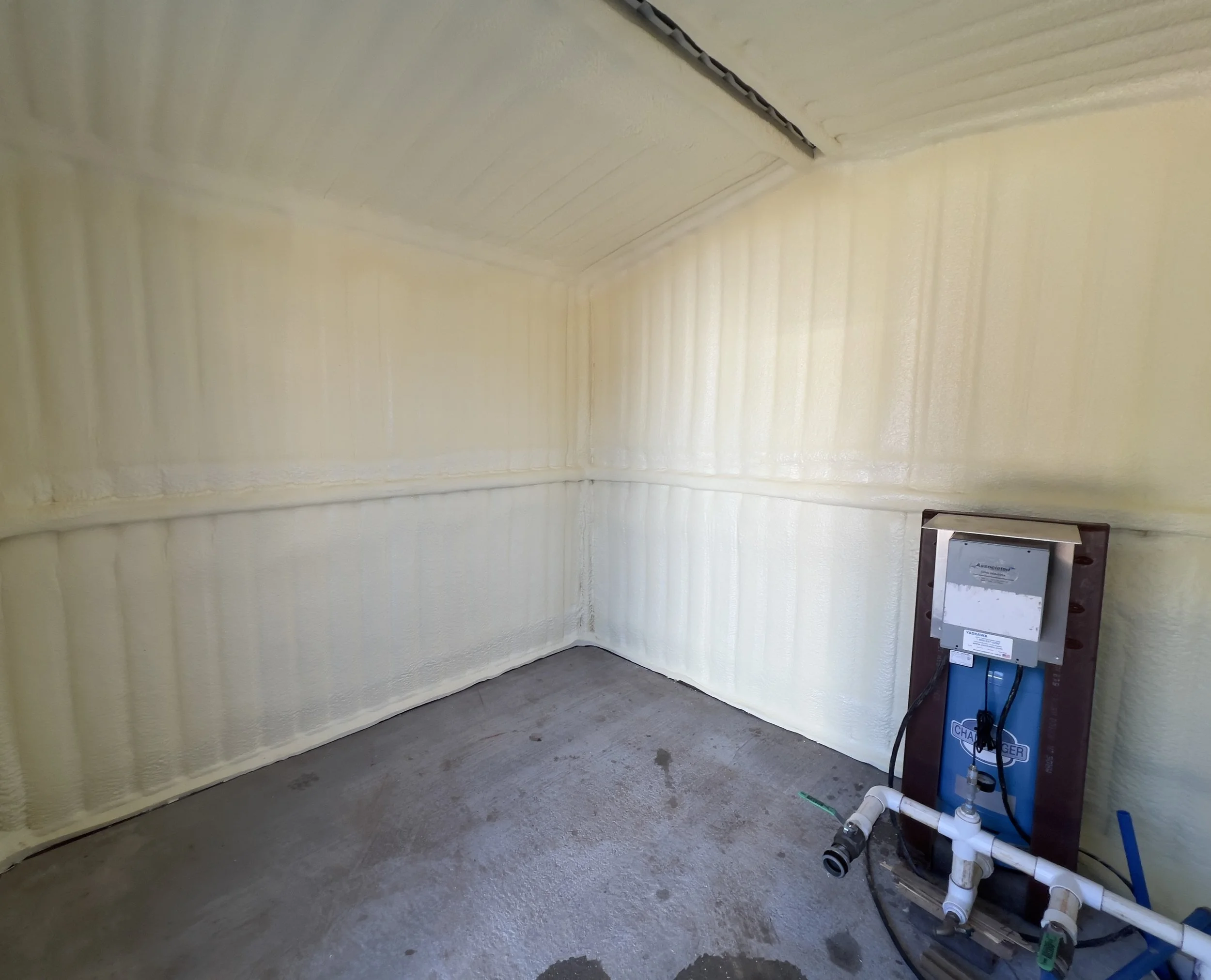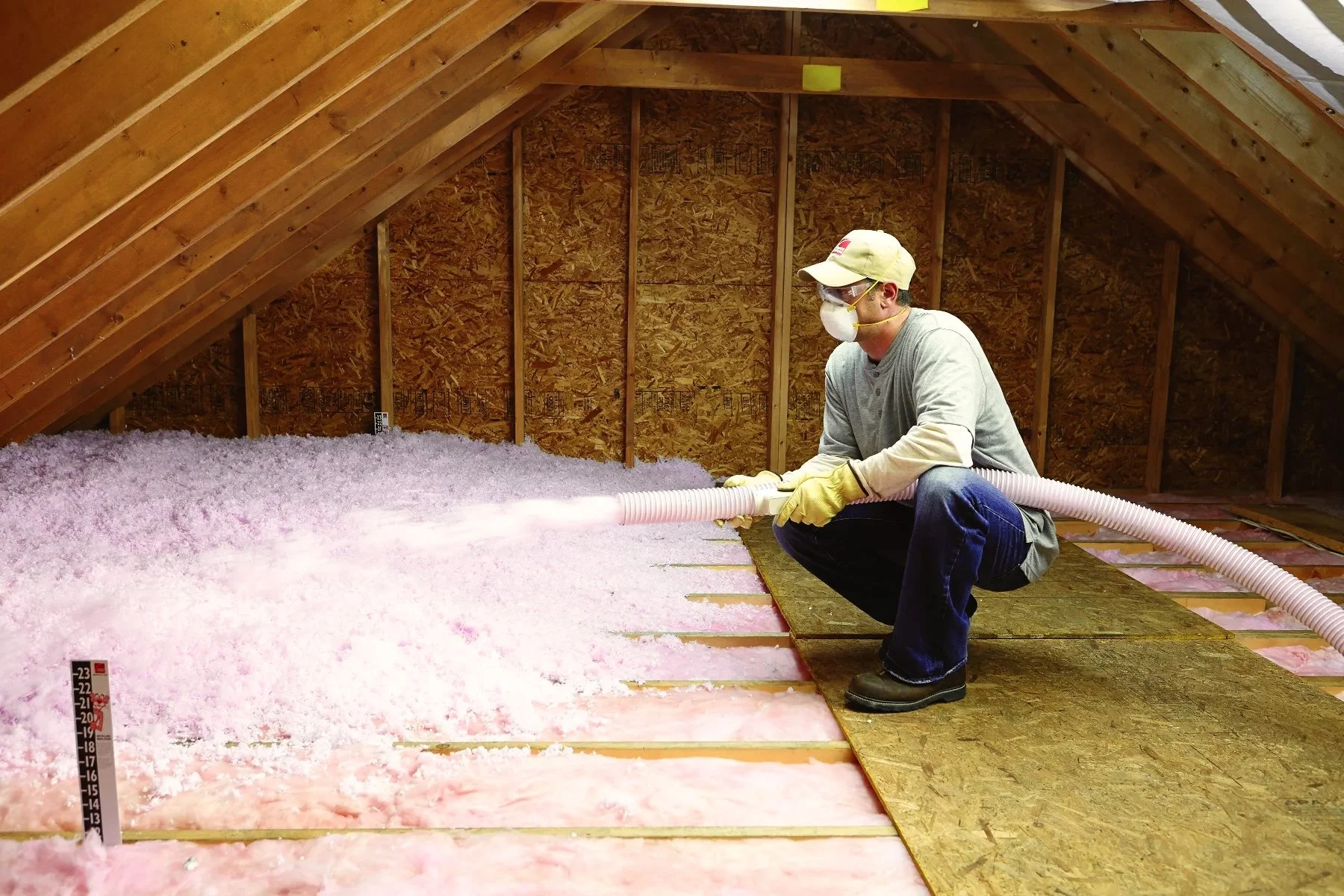Open Cell Spray Foam
Open-cell spray foam is a lightweight insulation material with an open-cell structure that allows air to fill the spaces. It provides good thermal insulation but is more flexible than closed-cell foam. While it's not as effective as a moisture barrier, it excels in sound absorption. Open-cell foam is suitable for residential applications where cost-effectiveness, flexibility, and sound control are priorities.
Closed Cell Spray Foam
Closed-cell spray foam is a high-performance insulation material with a dense structure that creates an airtight seal. It provides excellent thermal insulation, acts as a moisture barrier, and adds structural support. Versatile and long-lasting, it's applied to various surfaces for energy efficiency, sound dampening, and durability. Ideal for residential and commercial buildings seeking superior insulation and moisture protection.
Spray Foam Painting
Painting spray foam involves applying a tailored finish to the surface of foam insulation. This protective layer enhances the foam's appearance, provides additional weather resistance, and can be customized for aesthetic preferences. The paint helps shield the foam from UV rays, moisture, and environmental elements, extending its lifespan. This process is ideal for finishing foam insulation in both residential and commercial applications, offering a blend of functionality and visual appeal.
Blown-In Insulation
Blown-in insulation is a loose-fill insulation material typically made of fiberglass, cellulose, or mineral wool. It is installed by blowing or spraying it into cavities, attics, or walls. This method allows for easy coverage of irregular spaces and provides effective thermal insulation. Blown-in insulation is a cost-efficient option, offering quick installation and adaptability to various structures. It enhances energy efficiency by reducing heat transfer and is commonly used for both residential and commercial insulation projects.




